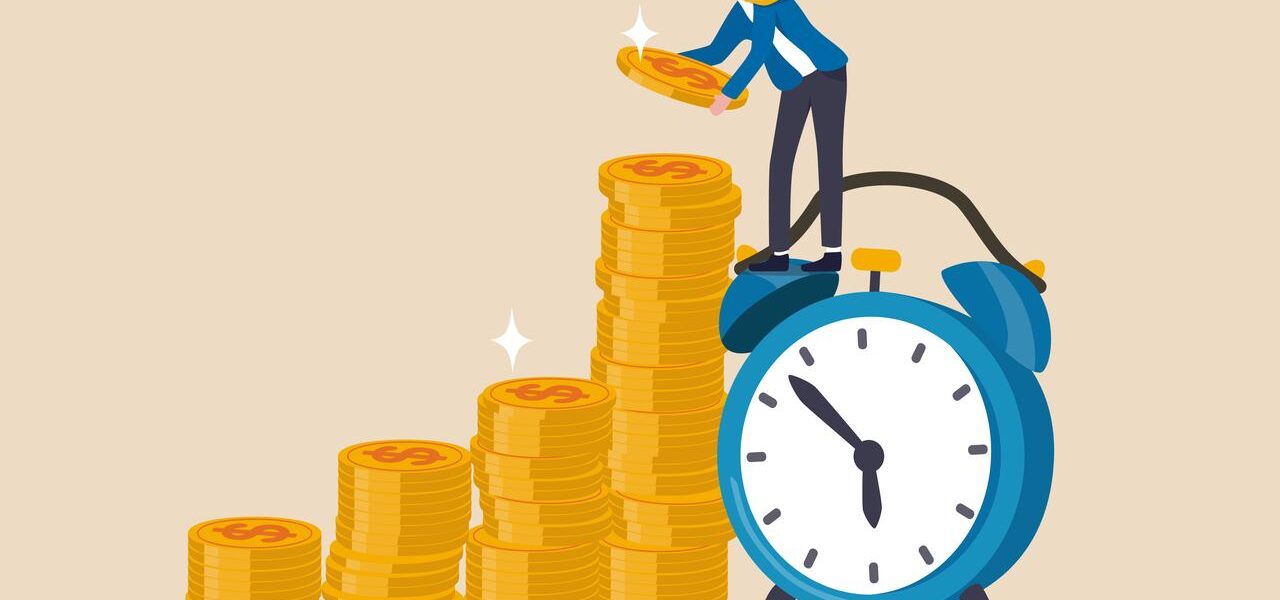Debt recycling is a financial strategy that can help individuals maximize their wealth and achieve their long-term financial goals. By understanding the basics of debt recycling, assessing your financial situation, and making necessary adjustments along the way, you can implement a successful debt recycling strategy that works for you. In this article, we will explore the fundamentals of debt recycling and provide you with valuable tips to help you master this strategy.
Understanding the Basics of Debt Recycling
Debt recycling is a strategy that involves redirecting your non-deductible debt towards an investment in order to create tax-deductible debt. By doing so, you can potentially increase the tax efficiency of your borrowing and accelerate the growth of your wealth.
Debt recycling is a strategic investment planning with expert financial advisor Sydney that requires careful planning and consideration. It is not suitable for everyone and should be approached with caution. Before embarking on a debt recycling journey, it is essential to fully understand the risks and benefits associated with this approach.

What is Debt Recycling?
Debt recycling involves using the equity in your home or other assets to finance an investment. The income generated by this investment is then used to pay off your non-deductible debt, such as your mortgage or personal loan.
By leveraging the equity in your assets, you can potentially unlock new opportunities for wealth creation. Debt recycling allows you to make your money work harder for you by strategically allocating funds towards investments that have the potential to generate higher returns.
The Mechanics of Debt Recycling
The process of debt recycling begins by assessing the equity in your assets and determining the amount that can be redirected towards an investment. This investment should generate sufficient income to cover the interest costs of the tax-deductible debt.
Implementing a debt recycling strategy requires a deep understanding of your financial situation and goals. It is crucial to conduct thorough research and seek professional advice to ensure that you are making informed decisions that align with your long-term objectives.
When implementing a debt recycling strategy, it is important to carefully consider the interest rates, investment returns, and tax implications involved. Seeking advice from a financial professional can help you navigate these complexities and make informed decisions.
The Benefits of Debt Recycling
Implementing a debt recycling strategy can offer a range of financial advantages and long-term benefits for your wealth accumulation.
Debt recycling is a strategic financial approach that involves leveraging your existing assets to invest in income-generating opportunities while simultaneously paying down non-tax-deductible debt. This method allows individuals to optimize their financial resources and potentially enhance their overall wealth accumulation over time.
Financial Advantages of Debt Recycling
One of the key financial advantages of debt recycling is the potential for tax savings. By converting your non-deductible debt into tax-deductible debt, you may be able to reduce your taxable income and lower your overall tax liability.
In addition, by using the income generated from your investment to pay off your non-deductible debt, you can accelerate the repayment process and ultimately reduce the interest costs associated with your borrowing.
Moreover, debt recycling can also provide individuals with the opportunity to diversify their investment portfolio and potentially increase their overall investment returns. By strategically allocating funds towards income-producing assets, individuals can build a more robust financial foundation and mitigate risks associated with market fluctuations.
Long-term Impacts on Your Wealth
Over time, the successful implementation of a debt recycling strategy can lead to the accumulation of substantial wealth. By leveraging your assets and maximizing the returns from your investments, you can grow your wealth at a faster rate and achieve your financial goals sooner.
Furthermore, the compounding effect of reinvesting income generated from your investments can significantly boost your wealth accumulation over the long term. This continuous cycle of investing, repaying debt, and reinvesting can create a powerful wealth-building strategy that aligns with your financial objectives and aspirations.

Implementing a Debt Recycling Strategy
Before embarking on a debt recycling strategy, it is essential to assess your financial situation and carefully plan your approach.
Debt recycling is a financial strategy that involves using the equity in your home or other assets to invest in income-producing assets. By doing so, you can potentially accelerate wealth creation and reduce the overall cost of your debts over time. However, this strategy is not suitable for everyone and requires careful consideration and planning.
Assessing Your Financial Situation
The first step in implementing a debt recycling strategy is to evaluate your current financial position. This includes analyzing your income, expenses, assets, liabilities, and future financial goals. Understanding your financial situation will help you determine the feasibility and suitability of debt recycling for your circumstances.
It is also important to consider your risk tolerance and investment knowledge when assessing your financial situation. Debt recycling involves leveraging your assets to invest, which can introduce additional risks to your financial portfolio. Being aware of your risk tolerance and seeking advice from a qualified financial advisor can help you make informed decisions.
Choosing the Right Debt to Recycle
Not all debts are suitable for recycling. It is important to select the right debt to recycle based on factors such as interest rates, terms, and potential tax deductions. Consulting with a financial advisor can help you choose the most appropriate debt to recycle given your specific financial situation and goals.
When choosing the debt to recycle, consider the potential returns on investment and the tax implications of the interest payments. By strategically selecting the debt to recycle, you can maximize the benefits of this financial strategy and optimize your wealth-building potential.
Setting Up a Debt Recycling Plan
Once you have chosen the debt to recycle, it is crucial to set up a comprehensive debt recycling plan. This plan should outline your investment strategy, borrowing arrangement, cash flow management, and risk mitigation strategies. Regularly reviewing your plan and making adjustments when necessary is key to ensuring its long-term success.
Monitoring the performance of your investments and tracking the progress of your debt recycling plan is essential for making informed decisions. By staying proactive and adapting to changes in the financial landscape, you can maximize the benefits of debt recycling and work towards achieving your long-term financial goals.
Risks and Challenges in Debt Recycling
While debt recycling can offer significant benefits, it is important to be aware of the associated risks and challenges.
Debt recycling is a financial strategy that involves borrowing against the equity in your home or investment property to invest in income-producing assets. By doing so, you can potentially increase your wealth through the power of compound interest and tax deductions on the investment loan interest. However, like any financial strategy, there are risks and challenges that need to be considered.
Potential Pitfalls of Debt Recycling
One potential pitfall of debt recycling is the risk of investment underperformance. If the returns generated by your investment are lower than expected, it can reduce the effectiveness of your debt recycling strategy and delay the repayment of your non-deductible debt.
In addition, changes in interest rates or unforeseen financial circumstances can impact the outcomes of your debt recycling plan. It is essential to monitor market conditions and be prepared to adjust your strategy accordingly.
Another risk to consider is the potential for a downturn in the property market, which could affect the value of your investment property. If the value of your property decreases, it may impact your ability to borrow against its equity for further investments, leading to a disruption in your debt recycling plan.
How to Mitigate Risks in Debt Recycling
To mitigate risks in debt recycling, it is important to diversify your investments and carefully analyze the potential returns and risks associated with each investment. Maintaining a balanced investment portfolio and seeking professional advice can help you manage risks and make informed decisions.
Furthermore, having a contingency plan in place can help you navigate unexpected challenges that may arise during the debt recycling process. By setting aside emergency funds or having alternative sources of income, you can protect yourself from financial setbacks and ensure the sustainability of your debt recycling strategy in the long run.
Monitoring and Adjusting Your Debt Recycling Strategy
For your debt recycling strategy to remain effective and successful, regular monitoring and adjustment are essential.
When it comes to monitoring and adjusting your debt recycling strategy, staying proactive is key. Beyond just regular check-ins, consider setting up automated alerts or reminders to ensure you stay on top of any changes or opportunities in the market.
Regular Review of Your Debt Recycling Plan
Periodically reviewing your debt recycling plan allows you to assess the performance of your investments and make necessary adjustments. This review should include an analysis of investment returns, changes in interest rates, and any changes in your financial circumstances.
Additionally, consider expanding your review process to include a deep dive into your overall financial goals and risk tolerance. Understanding how your debt recycling strategy aligns with your broader financial objectives can help you make more informed decisions.
Making Necessary Adjustments to Your Strategy
If you identify any potential issues or changes in your circumstances during the review process, it is important to make timely adjustments to your debt recycling strategy. This may involve reallocating your investments, refinancing your debt, or seeking professional advice to ensure the continued success of your strategy.
Furthermore, don’t overlook the importance of diversification within your debt recycling strategy. Exploring different asset classes and investment options can help spread risk and potentially enhance returns over the long term.
In conclusion, mastering debt recycling requires a strong understanding of its basics, careful planning, and ongoing monitoring. By implementing a successful debt recycling strategy, you can maximize your wealth accumulation potential and achieve your long-term financial goals. Remember to consult with a financial advisor and regularly review your strategy to ensure its ongoing success and effectiveness.
See Also: Essential Steps to Starting Your Own Fund with SMSF Setup



